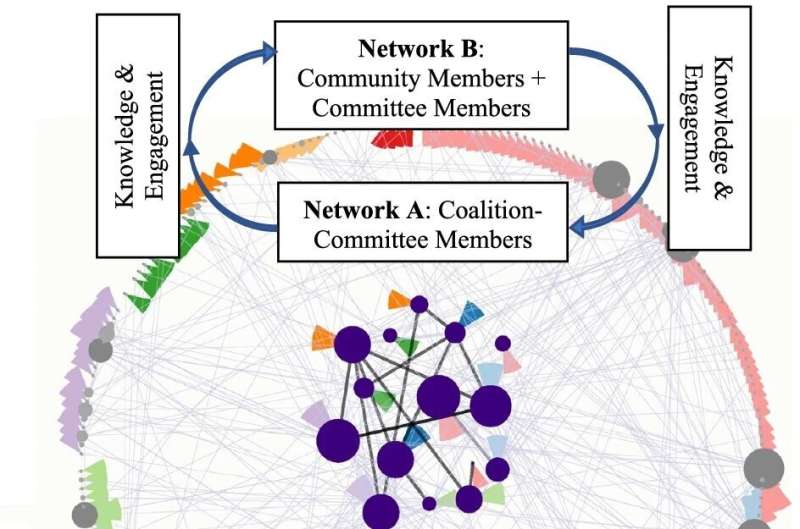Solving childhood obesity requires strong connections within coalitions, new study suggests

How do you solve a problem as vast and intractable as childhood obesity? A new study from researchers at the Friedman School of Nutrition Science and Policy at Tufts University and ChildObesity180 offers important new clues.
It suggests coalitions working to end childhood obesity can more quickly create lasting change if members form close relationships with people in different types of organizations from their own, are able to learn new information rapidly, and can share that new knowledge both within their existing networks and with people in other sectors.
"We saw that it was relevant whether or not the members of a coalition were talking more often with people outside their own sector," says Travis Moore, the study's lead author and a postdoctoral researcher in the Friedman School's Division of Nutrition Interventions, Communication, and Behavior Change.
"If a coalition is comprised of people from public health, hospitals, schools, and community agencies, for example, but the public health people are only talking with other public health people and the community agency people are only talking among themselves, change happens more slowly."
The study, published recently in BMC Public Health, examined three of the nine communities enrolled in Catalyzing Communities, an initiative to create successful community-wide interventions to prevent and decrease rates of childhood obesity nationwide. The initiative is part of ChildObesity180, a Tufts University effort founded by Christina Economos, dean ad interim of the Friedman School and senior author of the study, to address the complex drivers of childhood obesity and its impact at all stages of life.
Catalyzing Communities works closely with multisector community coalitions to use evidence-based systems solutions in order to identify high-impact opportunities to improve health and increase health equity for children.
In this most recent study, researchers examined how community coalition formation changed over time in general, and how an intervention could be tailored to improve the adoption of childhood obesity prevention strategies within coalitions. Coalitions whose members quickly learn new insights about how child health promotion is driven and make more partnerships across sectors will be the most successful, the research suggests.
"Coalitions become more effective more quickly when members maintain their current partnerships while simultaneously making lots of connections across sectors and maintaining those relationships as well," says Economos, who is also the New Balance Chair in Childhood Nutrition and professor of nutrition at Tufts.
"Coalition members who learn more about childhood obesity prevention tend to increase the number of people with whom they share that information. And the people who are connected to those coalition members also increase their understanding and engagement with the issue."
Moore notes that, while we know a lot about the causes of childhood obesity, we know far less about how to effect change and create health equity. "Most research focuses on the structure of coalitions," Moore says. "Our research attempts to understand how groups evolve over time and ultimately create change. Through our research, we believe we can help groups create better mechanisms for redistributing both knowledge and resources to create health equity."
More information: Travis R. Moore et al, Tracing coalition changes in knowledge in and engagement with childhood obesity prevention to improve intervention implementation, BMC Public Health (2022). DOI: 10.1186/s12889-022-14208-3




















